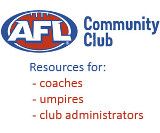USAFL Season Preview Week - Women Part 1
In a dozen years, they've gone from touch to tackle, from a grass roots national interest to a full fledged international endeavor, and from a small, makeshift group of teams into an ever expanding roster of clubs that are lining up to dot he American map.
Take a bow, ladies, you've come a long way.
2015 marks the tenth anniversary of the Women's Division at the USAFL National Championships. The last half of that has been dominated by one team, the Denver Lady Bulldogs. And it has been a rather impressive reign.
But as the competition begins its second decade, the field is equilibrating somewhat. The talent and quality of women's footy is getting better and better, and the gap between the perennial power and those that challenge them is getting smaller and smaller. Will this year feature more of the same, or will there be a changing of the guard?
There is a lot to say about the ladies who continue to take the pitch and lead the way. So much so, that their preview will be in two parts. Here are the first set of teams:

While their men’s team has struggled for numbers, the Lady Hawks from Arizona have kept plugging along, with a small yet steady crew of players. Five of them represented the USA at IC14 in August; Lindsay Hestand and Melissa Armstrong played with the Freedom, while Vanessa Welker, Nicole Fasula, and Courtney Church dressed for the Liberty.
The Hawks were once a staple among the women’s division sides, but in previous years have had to settle for playing supporting roles on larger teams. Fasula, Armstrong, and Church all competed at Nationals this past year as part of a combination that included three players from Portland and the core of San Francisco. They made it to the final, and gave the defending champion Denver Lady Bulldogs all they could handle in defeat.
Despite the lack of players, the passion of the Lady Hawks keeps the flame in the desert going. With Nationals in relatively nearby Austin, and recruiting well underway, their presence should be greater in 2015. They’ll also be helped by the fact that the Freedom and Liberty camp will be held there in April, which should bring some interest to the club, and the sport, to Arizona.

A small band of ladies from the nation’s capital has kept the women’s game going there, but much like the men’s Eagles, they have had to deal with the turnover that comes with the transient population of DC.
Their numbers troubles aside, three players represented the US at IC14: Veteran Judith Stein, midfielder Karen Stablein, and up-and-comer Alex Mims. Mims was sidelined late in the year with an injury that caused her to miss Nationals, but she’ll be back in 2015, and is looking forward to putting up a better year.
Four players joined the Montreal Angels in Dublin last October for nationals, and despite the 1-2 record, the ladies that made the trip to Ohio all contributed, including Samantha Cartwright, who got valuable experience on the big stage in her rookie year.
With Stein taking the helm of the US Liberty development squad, it’ll be up to the rest of the Eagles to fill in and help the team grow. Their biggest offseason acquisition is Emily Riehl, formerly of the Boston Lady Demons. Riehl brings to DC a vast arsenal of talents, including speed, versatility, and a big booming kick that can cut through the stiffest of winds.
They spent most of last year combined with the Boston Ladies, and together they had a solid campaign. Hopefully this year will see the group grow into a solid bunch that can represent the team on their own at Nationals in the next few years.

A little more than a year after being born from a meetup, the Lady Dees from Beantown found themselves staring down Denver in the 2012 Women’s Grand Final. Though they would fall to a Bulldogs side at the top of their game, there was plenty to be hopeful for.
In two seasons since, the core of the Demons has remained steady, and they have played good football against some tough sides on the East Coast. Last season, with the help of the girls from Baltimore-Washington, Boston finished 3-3, splitting their matches with New York and Montreal.
Despite sending considerable numbers to Nationals in their first three years of existence, the Lady Dees had just four players head to Dublin. Joined with the Minnesota reserves, and a Columbus club was largely inexperienced, the Dees could not help the combination from losing all three matches.
As always, however, the 2015 season brings with it aggressive recruiting and Boston is looking for a return to glory. On paper, coach Lisa Arredondo’s team has some considerable talent, built mostly around skill and speed. Cailin Deal arrives from Baltimore-Washington to help in the middle, assisting Alyssa Green and Sandy Deestra in linking the midfield to the forwards. The Demons are possibly the quickest out of the center of the ground of anybody in the American women’s game.
Boston also had Holly Teufel represent them at the International Cup last summer, and she brings her veteran leadership once again to the newcomers, as does Eileen Hansen’s quick-thinking and improvisational ability. Finally, Andi Williams can play at either end of the oval, and has a knack of quarterbacking the girls around her to get them into position to either stop, or advance, the ball as needed.
Speed kills, and sometimes it has a knack of counteracting physicality. If the Dees get a good pack to travel with them to Austin this year, then a return to the Grand Final – and possibly a chance at revenge over Denver – is a real possibility.

Portland inaugurated their ladies club in 2014, and played their first game that the Stumpdown Throwdown against Sacramento. Despite the 57-0 defeat, the Banshees showed a good deal of gumption in the contest.
Martha Baker and Simone Shepherd traveled to Dublin and competed with San Francisco and Arizona at Nationals. They made history for their club by participating, and almost made it even moreso memorable by making it all the way to the Grand Final. It’s an experience that can only help the two Aussies as they continue to build their new club here in the US.
With their brother club, the Steelheads, gaining momentum both in Metro and on the national stage, the Banshees’ growth should continue over the next several seasons. Whether they’ll have enough to field a full squad in Austin is still to be seen, but Portland is rising as the next hub of footy in America.

If you like a good comeback story, this is a pretty good one.
The Jillaroos were on the verge of completely disappearing off the map at the beginning of the 2014 season. What was once ten women strong was down to just one player, Stephanie McKitrick, the club’s captain. “Macca” carried the flag for Columbus on the women’s side, but the program looked doomed for oblivion.
In the spring, however, something awesome happened. A steady group of players, coming up from their co-ed league, started training together for the full Jillaroos side and by the time summer arrived, the pink-and-black had a baker’s dozen worth of dedicated footballers among its ranks.
Though the season wouldn’t bring much in the way of results – five losses in as many games from August through Nationals – the Jills gained invaluable experience against some good sides, including Toronto, Montreal, and New York. Those players will enter 2015 with something to prove, as they write the next chapter in their clubs history.
That chapter may begin without the agency of their captain, however, as McKitrick is still recovering from an off season injury. Erin Maedecker will have a larger role to fill in the backline as a result. Up front, the combination of Leah Heller and Ariel Balske lead the forward corps in what they hope will be a high scoring season. They will attempt to create leads from the midfielders, led by Amy Bryniarski, Stacia Waddle, and the shifty Stephanie Shipley.
Every good story needs a place to start, and with 2014 behind them, Columbus begins their journey anew. The wins will come, and games against Minnesota and Toronto should be a good barometer of where they are. They may even surprise a few unsuspecting foes in Austin.

You can’t stop an avalanche as it races down the hill. You can try to stop the seasons, but you know you never will, and you can try to stop the Lady Bulldogs, but they just will not stand still.
21 consecutive wins at Nationals, and 5 National Championships on the trot. There are very few superlatives in the dictionary for that sort of success. And while their male counterparts had a pretty spectacular run in their own right, even they couldn’t claim winning a hand full of rings in as many years as one has fingers.
Even more impressive is the fact that the club won their 5th title in a year where they experienced a good deal of turnover. Their newcomers have come up the ranks through their Metro and Co-ed program, and they have had an immediate impact on the team and their continued success. And, they managed to do it despite having some accuracy issues in their forward 50 during Nationals weekend.
But just how do they do it? Sheer athleticism. Most of Denver’s roster have some sort of athletic background; basketball, rugby, Gaelic, volleyball, lacrosse, you name it, at least one player on the team has played it. They’re strong, and they're fit. They put the ball in the air, dare you to go after it, then use strength and speed to beat you to it.
They’re also mentally tough, as exemplified by their captain, Hallie Lee. Lee was one of six Lady Bulldogs on the National team in Melbourne last summer, and her basketball and Crossfit background gives her a huge edge as the team’s ruck. Tawania Clark, last year’s Roos Medal winner for best-and-fairest at Nationals, is one of the most versatile players in the country, with quickness, kicking ability, and a crunching tackle to boot.
Bookending the midfielders is a good deal of talent on either side of the field. Two tall and rangy forwards, Lindsey Kastanek and Kaitlyn Mascher-Mace, are supplemented by the agility of hard hitting Anna Thexton and the elusive Sarah Plummer in the half-forward line. On defense, Janell Myers and Sarah Edwards-Rohner constantly harry opposing forwards, and keep them off the board.
In spite of their dominance, however, there were rumblings at last year’s Nationals that the rest of the league is starting to catch up. Both Calgary and Montreal/Baltimore-Washington came within a goal of knocking Denver off, and the four points they allowed to San Francisco in the final were the first scores they gave up in three grand finals.
But the girls from Denver know this, and they are vowing to return stronger and continue their dominant ways. And despite the growing talent around the country, it’s still a bit hard to doubt them.
|
|
|







